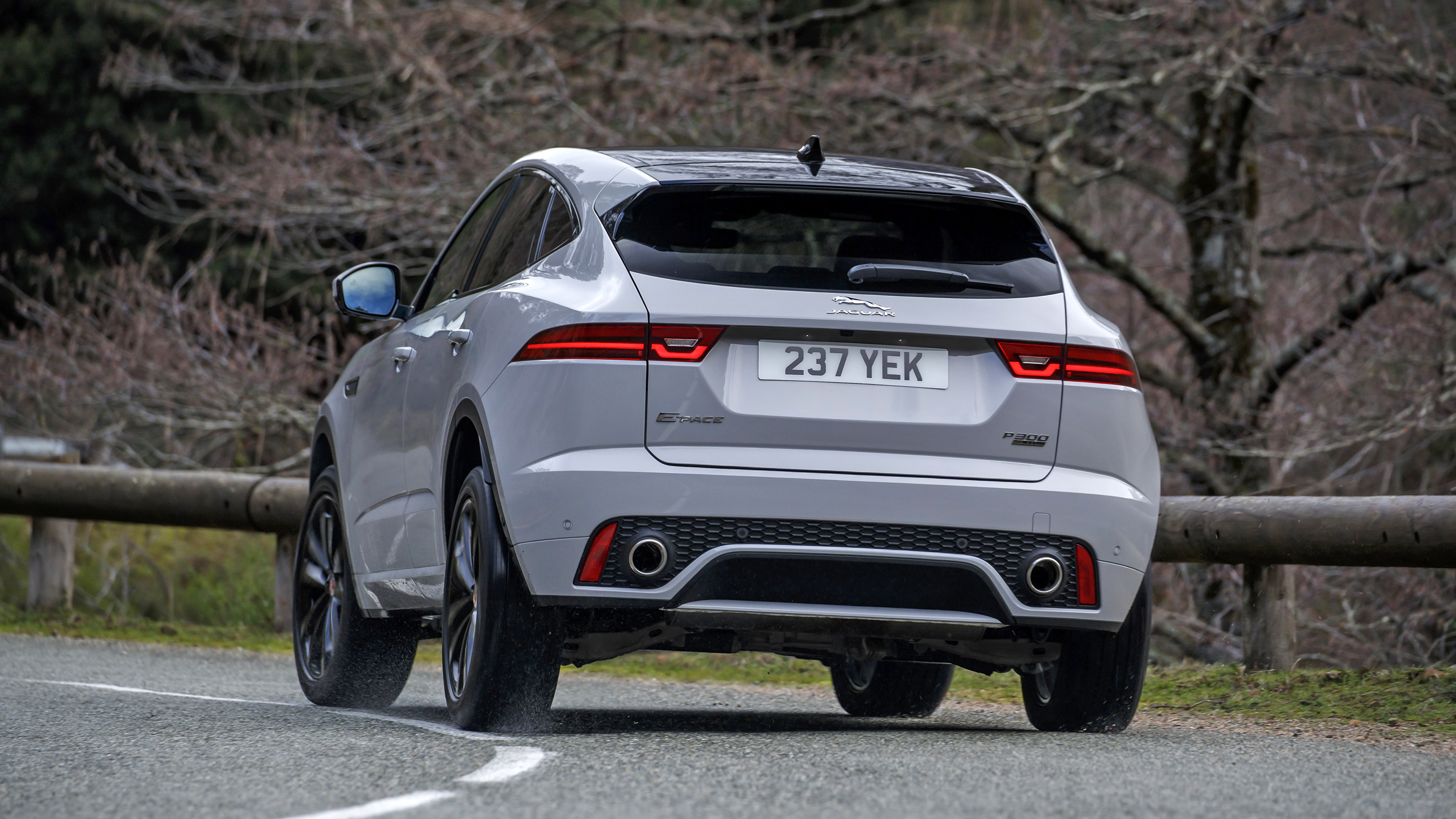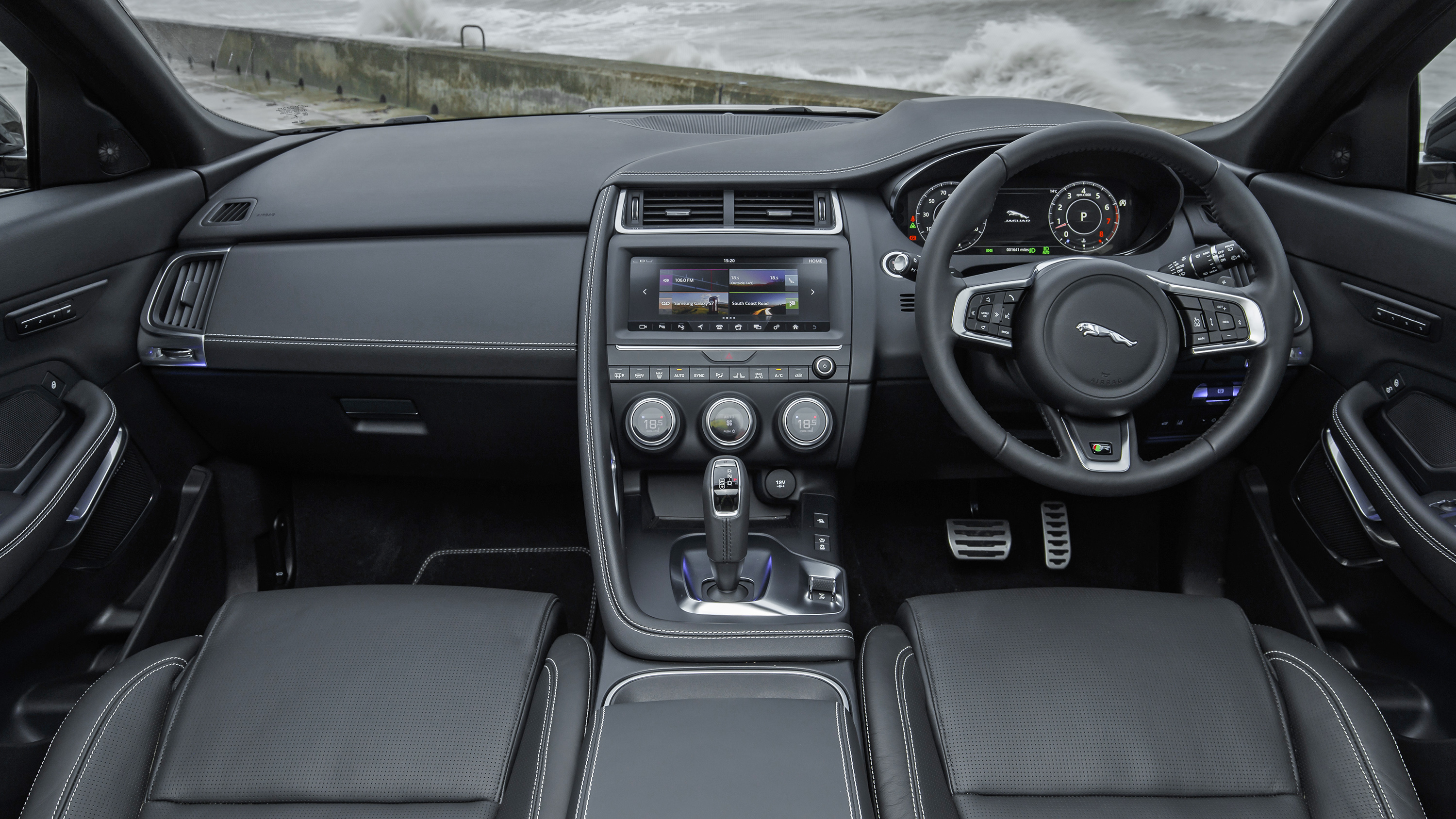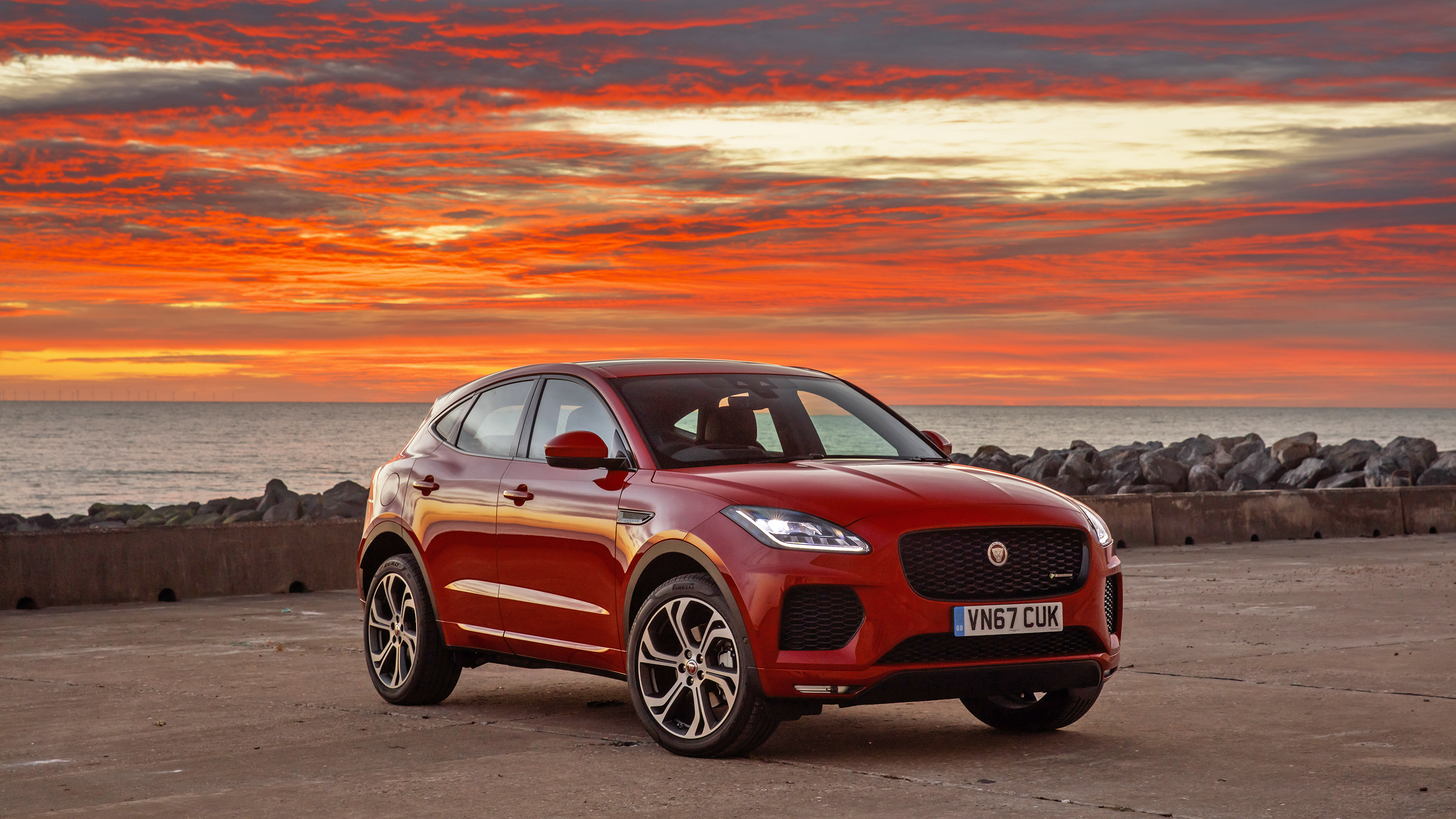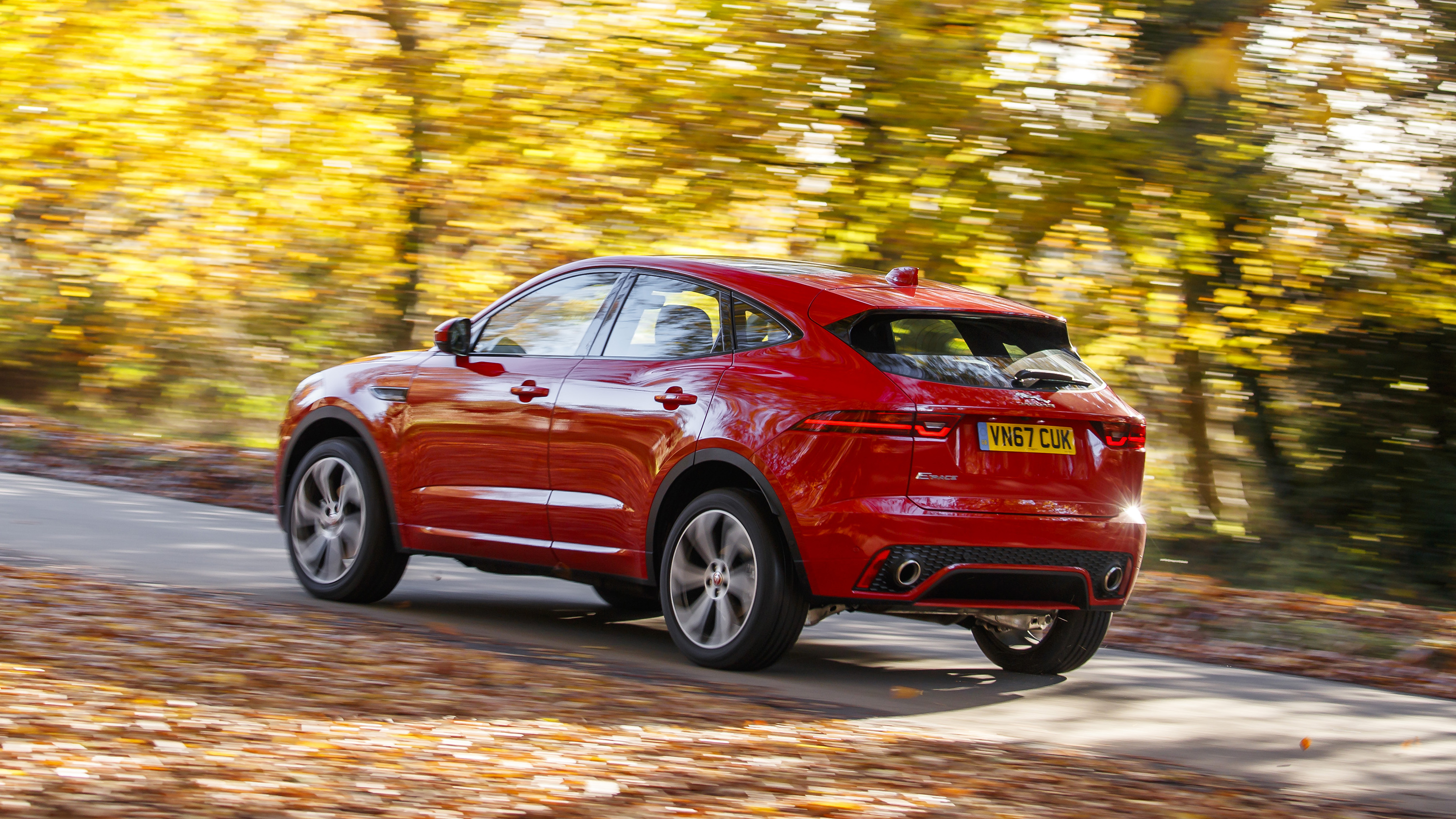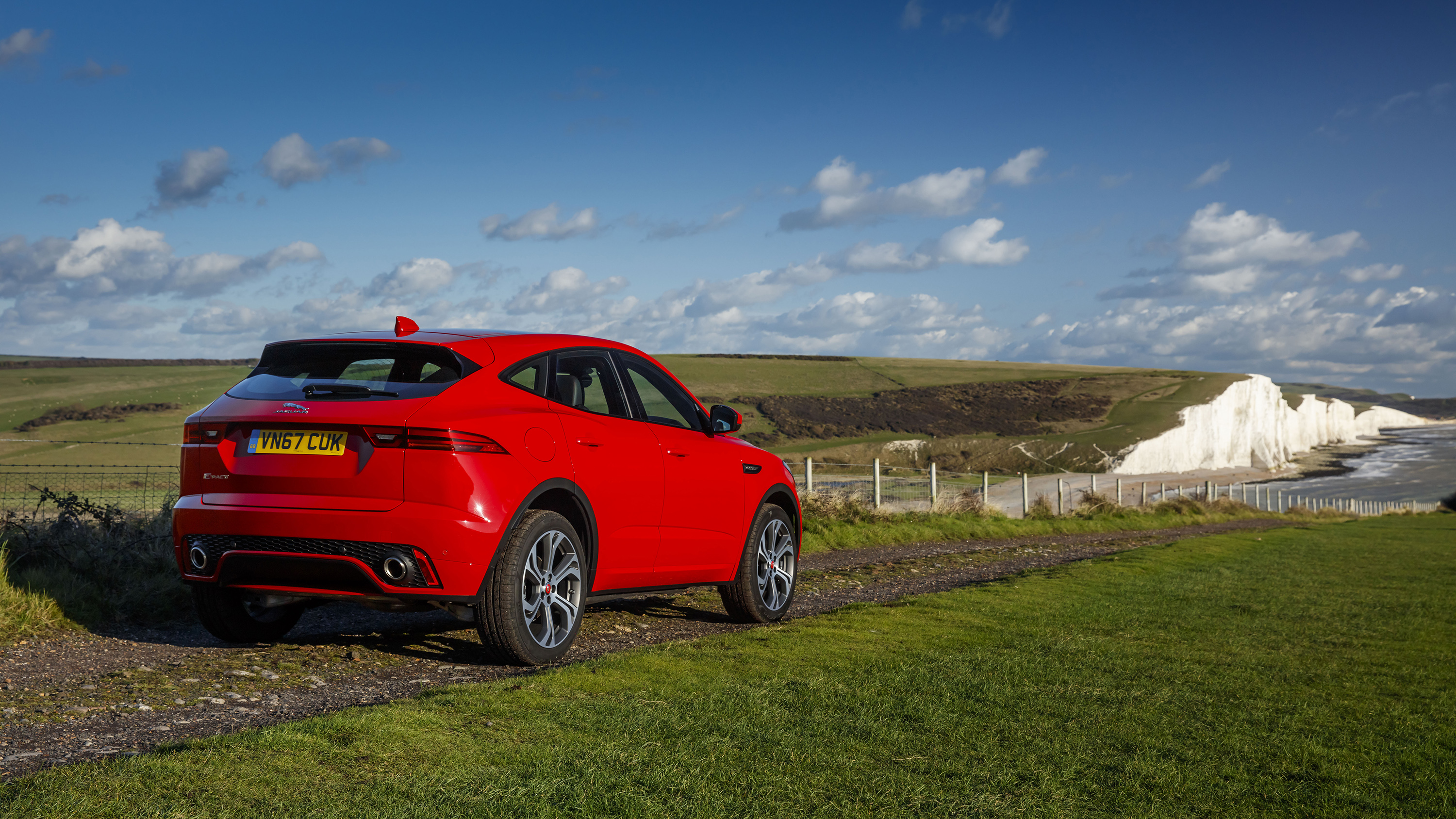
SPEC HIGHLIGHTS
- BHP
240bhp
- 0-62
6.8s
- CO2
175g/km
- Max Speed
139Mph
- Insurance
group36E
A Jaguar E-Pace; is that just a smaller F-Pace?
Essentially yes, although the E-Pace sits on the Range Rover Sport/Evoque platform rather than a bespoke Jaguar skeleton. So it’s pretty heavy - depending on spec, the same as the bigger F, despite being a fair bit smaller.
Jaguar jokingly refers to it as the ‘Cub’ to the F-Pace, and you can see the kinship immediately - there’s the familiar Jaguar wide grille and restrained surfacing, though it does appear to be a bit stubby from certain angles.
Weirdly, if you put your hand over the bottom half of the car, it looks very pretty on top - lovely window line and all - but then the bottom makes it look a little tubbier.
It’s not the most striking or exciting of Jaguar’s product, but it’s largely inoffensive. Certainly no worse than most smaller SUVs. In the bottom corner of the windscreen is a small silhouette of a mummy Jaguar and a little cub following along. I quite liked that, but then, I’m a bit sad.
So what’s it for?
Well, it’s Jaguar’s smallest SUV. So a five-seater with a decent boot and a full-ish set of ‘Ingenium’ 2.0-litre turbo four-cylinder engines.
There’s diesel (148bhp, 178bhp or 238bhp) or petrol (246bhp, 297bhp), you can get front-drive only on the base models (with a six-speed manual), right up to a pair of different AWD options mated to a nine-speed auto at the top, all of them front-biased until you start to slip.
That’s a £28,500 to £50,170 spread, in four trims (E-Pace, S, SE and HSE), with two bodystyles (E-Pace and R-Dynamic). One assumes that the very ends of that scale might be unicorns though. A Porsche Macan S with 340bhp lists somewhere at £48,287. I’ll just leave that there.
Does it feel small?
Top Gear
Newsletter
Thank you for subscribing to our newsletter. Look out for your regular round-up of news, reviews and offers in your inbox.
Get all the latest news, reviews and exclusives, direct to your inbox.
Smaller than an F-Pace, yes. Inside, there’s plenty of space for five - though the rear seats suffer slightly with that kicked-up rear window line - and plenty of thoughtful storage and general gubbins.
The interior is familiar Jaguar kit, nicely ergonomic and very clean and tidy, although the sat nav did glitch and slow down a bit during our test drive. You’ll recognise a lot of it from the Jaguar parts bin, but that’s no problem at all. And the view is what you expect from an SUV - you get bonus sightlines from the ‘command’ driving position, and it fits where an F-Pace wouldn’t.
Is it more agile, then?
It’s got a handy line in being relatively nippy. The transmission on the cars we drove were all all-wheel drive, and they seem keen enough. Body control is good - it certainly doesn’t flop about - and there’s enough transparency to the steering to keep the car placed accurately even when trotting along at a fair pace.
It never really feels very Jaguar-ish though - it’ll push the nose fairly hard before tucking in the rear if you stay on the power. Safe and secure, but nothing to write home about. Good for an SUV, a bit bland for a Jag.
Which engine works best?
Not the biggest petrol, that’s for sure. It’s just not suited to the car, blares a bit and never feels comfortable being worked hard. Pottering, it’s fine, but it never quite gels with the nine-speed auto, making the gearbox feel like it’s got three too many ratios to talk to. Yes, it gets down the road rapidly enough, but frankly, not in a way that makes you want to go for a drive just for the hell of it.
Much better is the top-spec diesel, with 238bhp. It’s only a second slower to 62mph than the big petrol (7.4 seconds plays 6.4), but it makes a fair chunk more torque lower down (368lb ft vs 295), and the combo seems to ally with the gearbox much more securely.
You can row it along at respectable pace without wincing. It also manages ten more mpg on the combined cycle (with a concomitant 162g/km vs 181), so there’s a useful saving there for not a great deal of performance loss. The ride is similarly inoffensive - it’s not super-comforting on the 20-inch wheels, but it can cope. I’m not sure the optional 21s would be of great use, mind, though they do look rather good.
And off road?
Surprisingly, it’s fairly adept. Yes, it’ll be limited by tyres more than anything, but the AWD system is clever and useful, and you’ll be able to totter around a field if you really have to. I’m not sure that’s particularly relevant to the kind of people who buy Jaguar SUVs, but nice to know, in any case.
Buy, or deny?
Not for me, I’m afraid. The E-Pace is a perfectly good car, well-executed. Hands up, I’m not a big fan of SUVs in general, seeing as they’re less good than a traditional hatch or estate at pretty much everything except looking like an SUV, but the E-Pace feels like a car designed to make money and take advantage of a popular niche.
There’s nothing wrong with that - you can’t blame Jaguar for wanting to make cash - but even in the company’s own range there are cars that appeal more. Hand me an XF Sportbrake and I’ll show you what Jaguar’s really capable of. In the case of the E-Pace we've driven, the XF Sportbrake is also £6,350 cheaper in the same spec. If you remain convinced you really need a small, premium SUV, I’m afraid the Porsche Macan is still a more compelling case.
6/10
Featured

Trending this week
- Car Review
BMW iX3





